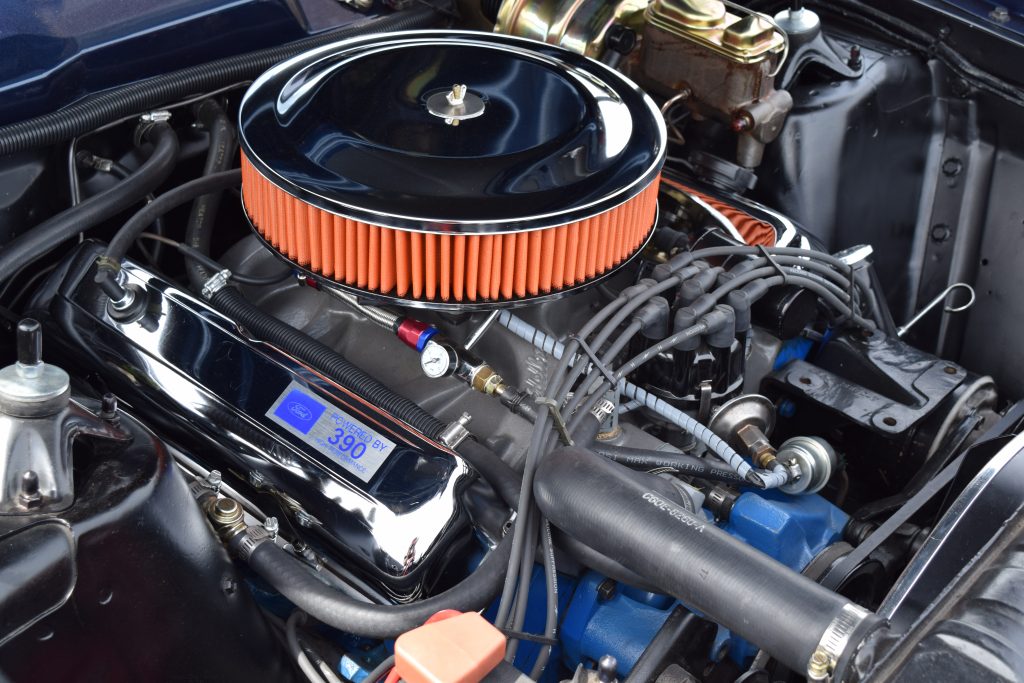Q: I have a Ford 390 engine. I had the block re-bored and was told to use moly piston rings. When I was finished with the rebuild, the engine began to use oil, so I tore it apart to see what was wrong with it. The cylinder walls were very wet (oily), as were the intake valves.
According to my Ford manual, the ring gaps should have been .015-inch to .023-inch for the top rings and .010-inch to .020-inch for the secondary rings. The top rings were within the specified tolerances, but the secondary rings were not. The oil control rings didn’t seem to have much tension in them, either.
What do I need to do to correct this problem? Is there a better valve seal than the stock seals I am using?

A: Now that you have the engine torn apart, you are going to have to re-hone your cylinders and get a fresh set of piston rings. The ideal scenario would have been to conduct a leakdown test to determine how the rings were sealing before you tore the engine apart. Even a compression test would have been a better idea, as the problem may not have been with the rings at all.
As for the valve seals, PTFE seals are best. However, you will have to machine the valve guides to use them.
…

Molly rings are impossible to seat . Go with perfect circle or forged
As the mating surface of the cylinder head and the intake manifold is under the valve cover, oil is prone to leak past the gasket if the seal is not perfect. If the second ring is installed upside down, it will not do its job to scrape oil off the cylinder walls. Molly rings require the proper bore finish to seal the compression and prevent blow by. I have ran moly rings in engines with 8.5 to 11.7 to 1 compression ratios with no blow by.
You have an FE what do the intake gaskets look like? Rings will not oil the valves. The PCV system can pull oil in the intake track,even with a good ring seal.
Molly rings seal better with correct Honeing Stone Grade and combination of sealed power pistons help my 1997 2.5L 5spd Jeep run alittle Beasty after rebuild.
Tommy Dean Baughman
Make sure the end gaps on the rings are not lined up ; but staggered. Make sure your oil drain hole in the head and gasket line up with the holes in the block.
I’ve used Perfect Circle Moly rings 52 years now, my Dad got me hooked on them handing him tools as a kid! We took every rebuild for a break in test drive speeding up to 50 wide open & letting it back down to 35, then wide open again! With about a 15 mile run, we stopped @ the old country store & my pay was a Pepsi & peanuts! First thing when every car stopped was looking @ the tailpipe! I swear they looked like someone had thrown a handful of flour in them! Besides proper crossharch honing, startup is crucial! Once started & timing is set, shut it off! NEVER get rings & cylingers hot till breaking it in! Getting hot due to the extra friction takes tension out the rings, tension which is needed to help the rings & cylinders conform to each other creating a better seal, moly or cast rings! As for oil rings, the oil babds hug the expander you put in the groove first! That expander does push the oil bands against the cylinder wall to conform & seal off oil consumption!This RE engine don’t know what it is, once bottom end is proper, oil has to come from the induction up top! The valve seals mentioned will do wonders, then any oil has to come from intake-under carb or injection system! Yes folks, I’m old, I had my favorite, but after years of engines, no engine knows what it is! One 440 in a 70 Charger I rebuilt with one 4 barrel & dual points after the first oil change I got to 143 MPH up hill, still picking up! I was going to see it on 150 & thought, I really need my license & backed off1 It was only a 5 year old car & drive awesome! When I told Dad, Well Boy, you don’t have to worry about your license, you won’t have it long! I still have not lost it many engines later!